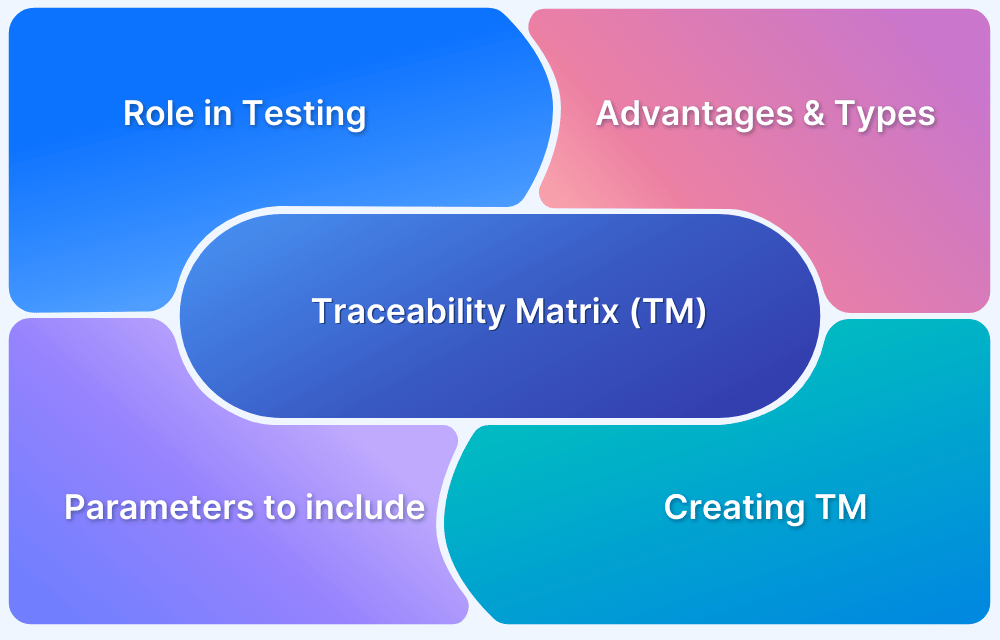Test infrastructure encompasses the essential hardware, software, and resources needed to support the software testing process effectively. This includes test environments, tools, equipment, and test data, all crucial for planning, executing, and evaluating tests.
A well-designed test infrastructure plays a vital role in ensuring efficient and effective testing. It is typically established before testing begins and is often managed by a specialized team or individual. By optimizing testing resources and processes, test infrastructure enables faster test execution, shorter release cycles, and quicker time to market.
What is Test Infrastructure?
Test Infrastructure refers to tasks, events, activities, and processes that facilitate and support manual and automated testing. Better planned and implemented infrastructure provides stability, reliability, and testing continuity.
Importance of Test Infrastructure
Below are the key reasons why test infrastructure is important:
- Efficient and Reliable Testing: Provides a stable environment for consistent and reproducible test results.
- Faster Bug Detection: Identifies issues early, improving software quality and reducing production defects.
- Supports Test Automation: Enables automation, reducing manual effort and speeding up the testing process.
- Faster Release Cycles: Accelerates test execution, leading to quicker feedback and releases.
- Cost Efficiency: Reduces manual testing needs and resources, optimizing overall testing efforts.
When to Perform Infrastructure Testing?
Infrastructure testing should be conducted whenever there are updates or changes to the testing environment.
Key instances to perform infrastructure testing include:
- Updates to the system or patches
- Introduction of new features in the system
- Operating system or database upgrades
- Hardware upgrades like RAM or CPU
- Security updates and software upgrades
- Addition of new tools or technologies
Who Performs Infrastructure Testing?
Infrastructure testing is a collaborative effort across several teams:
- Infrastructure Team: This team is responsible for the setup and maintenance of the infrastructure and plays a key role in performing infrastructure testing.
- System Administrator Team: After network changes and updates, they ensure network infrastructure and functionality.
- Infrastructure Maintenance Team: This team manages test planning and the maintenance of testing environments.
- Quality Assurance Team: QA teams conduct regression, integration, and configuration testing across different infrastructure setups.
- Project Managers: They oversee the planning, design, and documentation of infrastructure testing, ensuring alignment between all teams.
Components of Test Infrastructure
Test infrastructure is made up of several key components that support both manual and automated testing. These components ensure a stable and efficient testing process:
- System Under Test: The software or application being tested.
- Test Plan: A detailed document outlining test objectives, strategies, schedules, and resources.
- Test Libraries: A collection of reusable test components for standardizing test cases.
- Test Environment: The configuration of hardware, software, networks, and tools required for testing.
- Tools: Various tools are used to create and execute test scripts, monitor test execution, and track results.
- Documentation: Templates and guidelines to ensure consistency in test case creation and automation.
- Administrator: The individual responsible for managing test platforms, tools, and automation frameworks.
Also Read: Test Case Vs Test Script
Types of Test Infrastructure
Test infrastructure can vary depending on the type of testing being performed. Common types include:
- Manual Test Infrastructure: Focuses on providing the environment for human testers to perform tests.
- Automated Test Infrastructure: Includes tools and environments to run automated tests, reducing the need for manual intervention.
- Continuous Integration (CI) Infrastructure: Automates building, testing, and deploying code regularly to ensure continuous testing and integration.
Key Techniques for Test Infrastructure
Below are the key techniques important for test infrastructure:
- Client/Server Infrastructure Testing: Tests the performance of web servers, mail servers, operating systems, and hardware. It ensures infrastructure functions properly in the production environment, covering installation, browser compatibility, and OS support.
- Data Migration Testing: Verifies the smooth transfer of data between servers, versions, and configurations, ensuring application responsiveness and latency after migration.
- Cloud-based Infrastructure Testing: Assesses the performance and scalability of applications on cloud platforms like AWS, ensuring compatibility across environments and simulating real application use.
- Network-Level Testing: Tests the infrastructure supporting networks, such as servers and proxy systems, ensuring stable operation even after upgrades and changes.
- Installation/Uninstallation Testing: This process ensures that the application installs and uninstalls smoothly, verifying disk space, installation time, and file deletions after uninstallation.
- Environment for Testing Infrastructure: Establishes the right tools, configurations, and hardware for accurate test execution. It supports continuous testing and optimal test planning.
How to Perform Infrastructure Testing with BrowserStack
Developers need to ensure proper infrastructure testing before launching software applications to end users. However, setting up an in-house device lab can be costly and inefficient.
Cloud testing solutions offer a more practical alternative. By leveraging BrowserStack’s real device cloud, you can test your applications in actual user environments, ensuring robust performance across diverse conditions.
Here’s a quick overview of how to perform infrastructure testing with BrowserStack:
- Cross-Browser Testing: Test your app on a wide range of real devices and browsers to ensure compatibility across different environments.
- Network Simulation: Simulate varying network conditions to test application performance under different bandwidths.
- Geolocation Testing: Verify functionality by simulating access from different regions to account for localization and compliance requirements.
- Parallel Testing: Performing this on multiple devices speeds up load and stress testing by allowing simultaneous execution across various platforms.
- Real Device Testing: Use real mobile and desktop devices to uncover device-specific issues.
- Integration with CI/CD Pipelines: Integrating with CI/CD pipelines enables continuous infrastructure validation, lowering costs and enhancing reliability before production deployment.
Top Tools for Infrastructure Testing
Below are the top tools used for infrastructure testing:
Chef
Automates application deployment and infrastructure configuration. Chef uses a master-slave setup to ensure availability, where a backup server takes over if the primary server fails.
Puppet
A robust automation tool that uses a master-master architecture, ensuring system continuity by switching to a backup master server if the active one fails. Built in Ruby, it also supports embedded Ruby and DSL.
Ansible
A simple and highly scalable tool that uses SSH protocol for secure management of numerous nodes. Built in Python, it supports YAML scripting and provides redundancy through secondary nodes in case of failure.
Terraform
A tool used for provisioning infrastructure, managing resources across multiple service providers in a declarative manner, allowing easy management of infrastructure as code.
Nagios
A widely used monitoring tool, it helps track infrastructure health by detecting issues in servers, applications, and networks and providing timely alerts for administrators to act on.
Manual Testing Infrastructure vs Automated Testing Infrastructure
Both manual testing and automated testing infrastructure have their merits, and choosing the right infrastructure is crucial for efficient testing and smooth software delivery. Understanding the strengths and challenges of each approach can help teams decide which infrastructure to invest in, depending on project needs, timeline, and scale of operations.
Below is an explanation of manual and automated testing infrastructure to provide clarity on the best approach.
Manual Testing Infrastructure
Manual testing can be time-consuming and prone to human error. Here’s how manual testing infrastructure can slow down the process:
- Repetitive Tasks: Manual testers spend their day running repetitive tests, which leads to fatigue and reduces efficiency.
- Human Error: Since tests are conducted manually, results are often subject to human error, making it harder to reproduce bugs accurately.
- Scaling Issues: As software grows, manual testing becomes impractical due to the increasing amount of code that needs testing. This leads to low code coverage and suboptimal user experience.
- Limited Collaboration: Manual testing often results in siloed workflows between developers, testers, and stakeholders, which can hinder communication and collaboration across teams.
- Developer-QA Disconnect: Without the integration of automation, developers and QAs may not collaborate effectively, leading to poor product quality and team dynamics.
Also Read: QA Testing vs Dev Testing: The Differences
Automated Testing Infrastructure
While automated testing boosts speed and accuracy, there are challenges if the infrastructure isn’t properly planned:
- Test Environments: Insufficient test environments can cause delays. Cloud-based solutions can scale to meet growing needs without manual setup.
- Insufficient Automation: Automating only basic tests like regression is inadequate. Full pipeline automation is necessary for quality and timely results.
- Non-Optimal Strategy: A weak automation strategy can lead to poor coverage. A well-structured approach is essential for effective testing.
- Outdated Test Cases: Test cases should be updated regularly to reflect changes in requirements, devices, or frameworks to avoid errors.
- Infrastructural Issues: Downtime, limited device access, and poor debugging tools can slow down automated testing. A robust infrastructure is key.
What to Choose: Manual vs Automated Testing Infrastructure
Manual Testing Infrastructure might still be appropriate for small projects or when testing for usability and user experience. However, it is slower, more prone to errors, and can’t scale well as software grows.
Automated Testing Infrastructure is essential for modern software development, particularly for large applications. It provides speed, accuracy, and scalability, but it requires proper planning, a robust strategy, and an investment in the right tools and infrastructure.
Every Tester needs this: Test Automation Standards Checklist
For the fastest and most reliable results, transitioning to automated testing infrastructure is necessary. It enhances efficiency, accuracy, and speed in the software development lifecycle.
Conclusion
Upgrading the test infrastructure is essential to optimizing automated testing. Cloud-based solutions like BrowserStack Automate, which offers over 3,500 real browsers and devices, can address many common challenges. With features like parallel testing, integrations with leading CI/CD tools, and powerful debugging tools, testing becomes faster and more efficient. BrowserStack also facilitates easier collaboration and offers local testing through secure tunnels.
Today, inefficient test infrastructure can significantly slow down pipelines. By identifying bottlenecks and implementing the right tools and upgrades, teams can stay competitive and deliver high-quality products more quickly.








